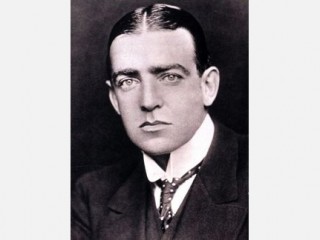
Shackleton Ernest biography
Date of birth : 1874-02-15
Date of death : 1922-01-05
Birthplace : Kilkea, County Kildare, Ireland
Nationality : Anglo-Irish
Category : Famous Figures
Last modified : 2010-05-07
Credited as : Explorer, Captain Scott’s Discovery Expedition, Antatarctica's expedition
Known as one of the greatest survivalists and explorers of all time, Ernest Shackleton would lead expeditions across one of the world’s harshest places – the continent of Antarctica. For his persistence, discoveries, and national prestige, the British Crown knighted him.
Born in Ireland in the mid-1870s, Ernest Shackleton was raised with strong ideals prevalent in both the Quakers and the Irish. In his latter years of adolescence, he joined the Royal Naval Service where he longed for adventure and fame for his explorations of the world. With Robert F. Scott and their “Discovery Expedition,” he would venture farther south than anyone before him. He returned to England and became a member of the Royal Scottish Geographical Society, which never fulfilled him like the adventures he had experienced prior. So, wanting to reach the South Pole, he signed the story over to various publications that would pay for the journey.
He landed near a glacier that had never been known before and named it the Beardmore Glacier. He climbed Mt. Erebus and returned to England a national icon and hero. His adventure is recorded in his book called The Heart of the Antarctic. When he returned to Antarctica to complete a trans-Antarctic expedition, his boat sank and he had to lead his parties to Elephant Island and South Georgia, well over one thousand miles away. The journey to South Georgia required a 1,300 km crossing in a wrecked whaleboat. With his attempts to seek aid, he was involved in three other rescue operations before returning to Elephant Island to rescue his men. On the return journey, a few of his trusted sailors died from the frigid climate. His efforts led to a rescue of many of his men in the Ross Sea, which is recorded in his book South.
Following, he was sent to South America as an envoy and representative of Britain’s desires to form allies in the region. He then went to northern Russia where he was to help organize winter expeditions attempting to reach the North Pole. Following World War I, however, he desired to explore Enderby Land and while there died in 1922. He was buried on South Georgia Island. The cause of death was ruled as angina pectoris and the fatigue he endured throughout all of his explorations.
















